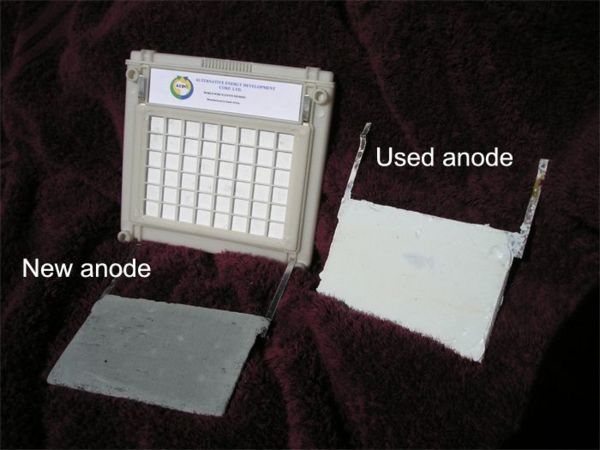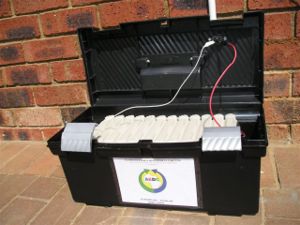Peripherals/Zinc-Air Fuel Cells: Difference between revisions
| Line 39: | Line 39: | ||
== External Links == |
== External Links == |
||
* [http://www.aedc.co.za/ Alternative Energy Development Corporation] |
* [http://www.aedc.co.za/ Alternative Energy Development Corporation] |
||
* [http://www.znap.co.za |
* [http://www.znap.co.za] |
||
* [http://www.evionyx.com/stationary.htm Evionyx] |
* [http://www.evionyx.com/stationary.htm Evionyx] |
||
* [http://www.powerzinc.com Power Zinc] |
* [http://www.powerzinc.com Power Zinc] |
||
Revision as of 09:46, 15 December 2010
Zinc-Air fuel cells are quiet, safe and emission-free so it can be used indoors if required.
Location and Intended Users
Anywhere without a reliable power supply
Motivation
Not only do zinc-air fuel cells offer a clean and economical method of power generation but it’s possible for the whole community to benefit from the product. The reason for this is because the zinc anodes will need to be exchange regularly.
In the village or at the school, a fuel cell service shop could be opened, where locally trained persons could provide the service of anode exchange, charge batteries and cell phones.
The Alternative Energy Development Corporation Fuel Cell
A 12 volt DC zinc-air fuel cell is manufactured by the Alternative Energy Development Corporation. The carry case box has two 12V DC power outlets with a maximum output of 30W, a high efficiency energy saving light that lights out a room of 4X4 square meters, a cell phone charger and a on/off switch as well as a volt meter.
Key Features
- 4000 watt hour capacity
- The fuel cells can operate from - 40 degrees C to + 65 degrees C
- No heat is created during operation.
- Extremely reliable
- Weight: 9kg
- Purchase Cost = $130
- Anode Replacement cost = $15
Extended Information
- This is done manually in the field and takes about 20 minutes per set of fuel cells. NO special tools or energy is required
- This box could run two laptops for 130 hours before the anodes would need to be exchanged (if the laptops were consuming 15W constantly).
Process
- AEDC supply training, jigs and 6 months worth of zinc to a community.
- Used Anodes are replaced by the trained technician for a charge of $15.00 per 12 anodes.
- The used anodes (zinc oxide) are put into plastic containers, purchased by AEDC ($0.80 per 12 used anodes) and fully recycled.

